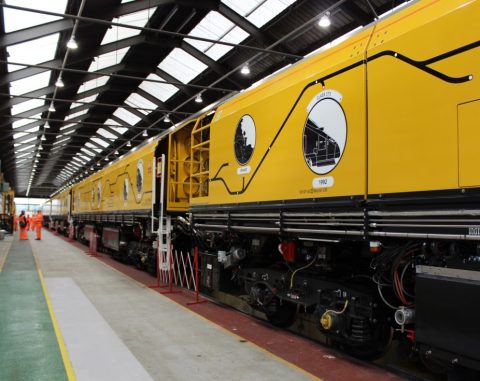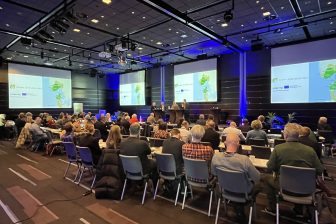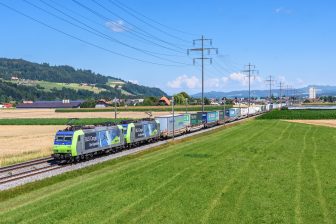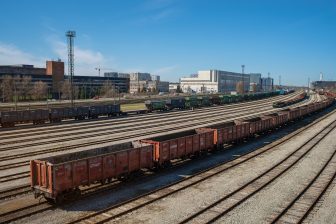
Network Rail’s new grinding trains to give freight a smoother ride
UK rail infrastructure manager Network Rail has invested 36 million pounds on three new grinding trains that it says will keep the tracks in top condition and ensure freight and passenger services run more smoothly in the future. The trains, which keep the railhead free of small pieces of metal, have been designed and built with industry partners Loram and Colas Rail, who will also help with maintenance.
Built to replace an older fleet of grinding machines, Network Rail says the new models cost £1,000 less per shift to run, deliver 35 per cent more output, have increased reliability and better welfare facilities for the teams working on them. They have a projected working life of 30 years.
Working together
Leevan Finney, Project Manager at Network Rail, said: “This has been a fantastic example of different parts of the rail industry working together to deliver new and innovative solutions which ultimately improve the railway. By working together we have been able to deliver a safer, more cost-effective, productive machine which also provides a more comfortable working environment for our people to work in.”
Susan Cooklin, Managing Director for Network Rail route services said: “Route services are here to provide the routes with the best equipment possible to help keep their railways running. The old machines were becoming unreliable and inefficient so the investment in the new grinding trains was absolutely essential to keep the tracks in good condition to minimise the chance of defects. I would like to thank both Loram and Colas Rail for the significant part they have played in helping us develop the new grinding trains. By working closely together we have been able to create an impressive new design using state of the art technology and innovation which will help maintain our railways for years to come.”
Modular design
Features of the new trains are increased metal removal due to more productive grinding at higher speeds – up to 15 miles per hour – and an increased transit speed of up to 70mph to get around the network faster, impacting fewer freight services. They are also modular in design, enabling them to be attached together to make larger machine or stay small for more targeted areas. The modular element also means parts can be replaced much more quickly, reducing a train’s down time. The trains also carry more water for dowsing to prevent smouldering and an obstacle avoidance system to limit impacts with track-side furniture and equipment.
Two of the three machines are already in service, and the largest one will be operating over the Christmas period, once the initial testing period is complete.





